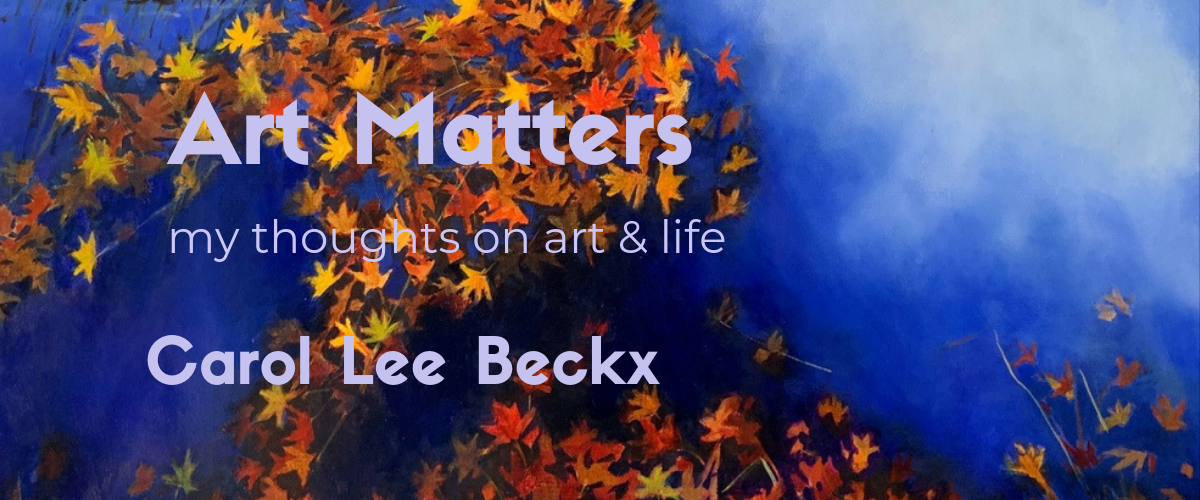During one of the recent workshops in my studio , I showed the artists how to transfer a drawing to a canvas without using a grid. Since I planned to do a couple in a series, and hadn't photographed the first steps, when I started the second painting I decided to document the process more carefully.
There are two approaches depending on the image. If the subject is complex then a careful line drawing is required.
If the painting will be loose and gestural, there's no need to be too precise, the oil line transfer can be rough. In the case of the Magnolia Diptych I used the second option.
• Sketch to establish the basic composition. If the drawing isn't large enough for your canvas, the main sections can be scanned and enlarged to fit. If I don't want to visit an office supply shop for larger photocopies, I print cropped sections, enlarge these and join them together.
• Turn the drawing over and using oil paint directly from the tube, paint over all the lines with a round brush - #4 or #6, leaving a generous amount of paint on either side of the lines so if you want to change the position of the lines you can. Choose a colour that will be featured in the painting.
• Place your drawing on the canvas with the painted lines facing down (the canvas is already primed with gesso and completely dry) and fix in position with some tape. If you're using a deep edge canvas some magazines can be placed under the canvas to provide a support for the transfer of the image. This gives a firm base to draw on.
• Using a coloured ballpoint pen draw over the drawing firmly, altering any lines if necessary. The paper can be lifted occasionally to check that the drawing is correct.
The images below show the process of transferring the drawing to the canvas.
Now the painting can begin - these four photos show how the painting progressed.
Once each separate canvas was almost finished I place them on adjoining easels to work on them as a whole. Some adjustments were needed to allow colours to flow from one side to the other. A single twig connects the two halves.Here's a photograph of the completed Diptych:
Magnolia Diptych - oil on canvas 2 x 500mm x 500mm
NOTE: This method is suitable for use with oil paint, acrylics will dry far too quickly for the process to work.
Carbon paper can be used instead but I enjoy the flexibilty of being able to wash out any unwanted lines with solvent.
















